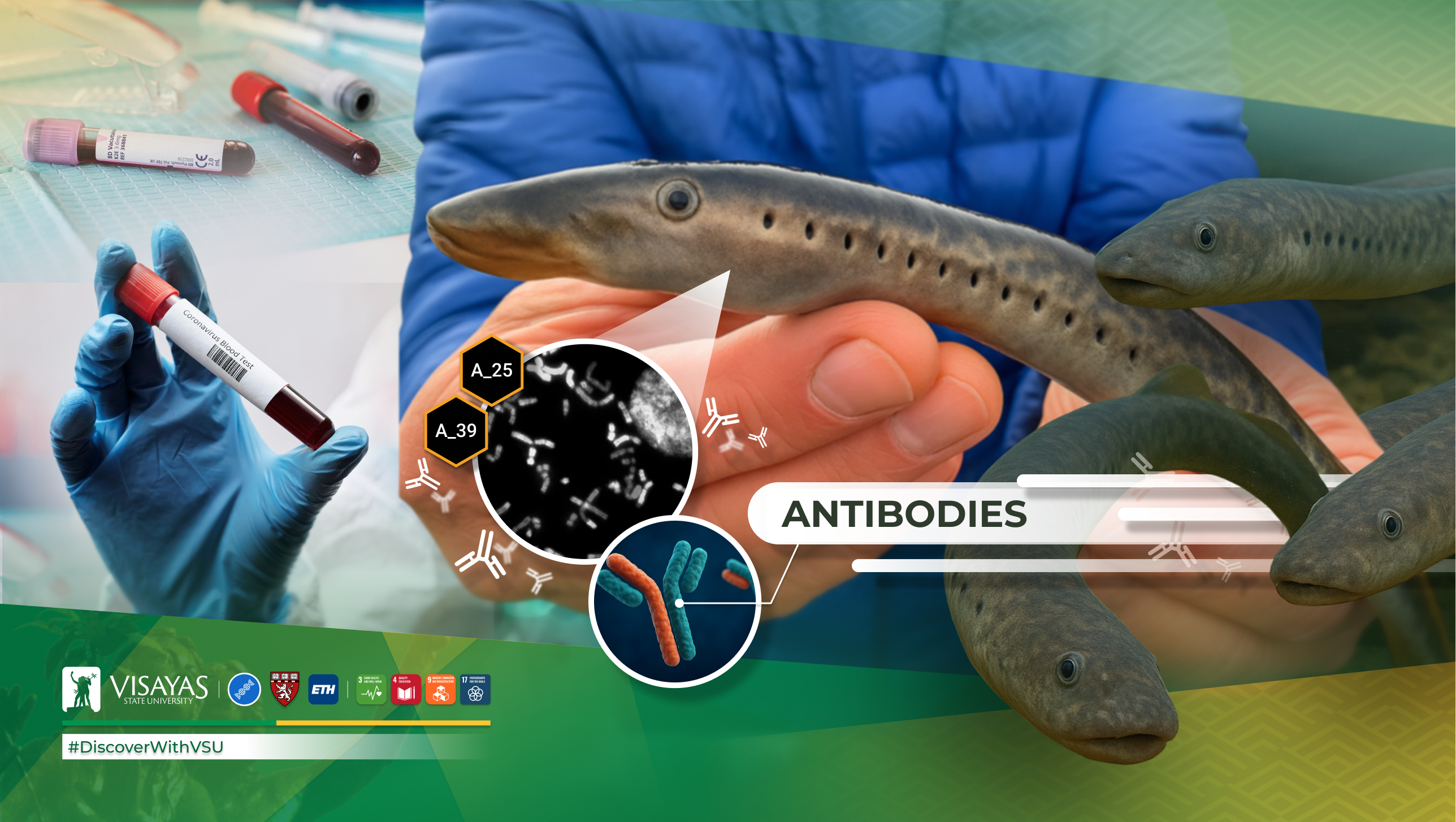#DiscoverWithVSU: Lampreys help unlock new antibodies for safer blood medicine
- Details
- Written by Mike Laurence V. Lumen
-
Published: 18 November 2025

Blood transfusion and organ transplantation save countless lives every day, but both rely heavily on a proper match of blood groups.
The familiar blood types A, B, AB, and O classifications come from tiny sugar molecules, called glycans, that sit on the surface of red blood cells. These glycans are like identification tags. If the body detects a tag it does not recognize, it can trigger a strong immune reaction, sometimes leading to rejection of transfused blood or even transplanted organs.
While matching blood groups has been part of medical practice for decades, scientists still lack precise tools to study these glycans at the molecular level. The reagents currently used, such as plant extracts and antibodies from mice, often lack the sensitivity or specificity to distinguish subtle differences in these sugar molecules. This makes it difficult to fully map how blood group antigens behave in different tissues or under disease conditions.
A recent international study, published in Glycobiology by Oxford University Press, addresses this challenge in a novel way. Researchers turned to the sea lamprey, a primitive fish species that has survived for more than 300 million years with an immune system very different from ours.
Unlike humans, lampreys produce a unique class of immune molecules that are particularly good at detecting carbohydrates. By exposing lampreys to human red blood cells, the research team triggered the production of antibodies against blood group antigens and then enriched the most effective ones through a specialized process known as the Smart Anti-Glycan Reagent (SAGR) pipeline.
The effort led to the discovery of two new monoclonal antibodies, named A_25 and A_39. Laboratory tests revealed that both antibodies strongly bind to the H antigen, the foundational structure found in all blood types and particularly abundant in type O blood.
They also recognize terminal N-acetyllactosamine (LacNAc), a sugar sequence found in many human tissues and linked to several important biological functions.
A_39, in particular, showed broader activity, interacting not just with H antigens but also with other blood groups–related sugars such as Lewis Y and complex LacNAc structures. What makes these antibodies especially powerful is their nanomolar-level affinity, meaning they can detect their targets even in very low concentrations, which offer much higher precision compared to conventional reagents.
These discoveries have wide-ranging implications. For transfusion medicine, more precise antibodies can reduce risks by providing clearer detection of blood antigens during cross-matching. For transplantation, they may help map the presence of blood group antigens in tissues, reducing the chance of rejection when organs are mismatched. In diagnostics, these antibodies could one day be developed into tools for identifying diseases that alter glycan patterns, such as certain cancers or blood disorders. They also open the door to engineering antibodies for very specific targets, including rare blood types like the Bombay phenotype, which current medical tools struggle to detect.
The study brought together experts from Beth Israel Deaconess Medical Center and Brigham and Women’s Hospital at Harvard Medical School, as well as ETH Zurich in Switzerland.
Among the authors is Dr. Ea Kristine Clarisse Tulin-Escueta of the Visayas State University-Department of Biotechnology (VSU-Biotech). Her involvement reflects how VSU researchers are engaging with global frontiers of biomedical science
Traditionally recognized for leadership in agriculture and environmental research, VSU is now contributing to breakthroughs that touch on human health at the molecular level.
For the university and the communities it serves, this means a widening horizon of opportunities, from opening avenues for local biotechnology research to inspiring students who see that work done in their home institution can connect directly with innovations of global significance.
This discovery reminds us that progress in science can sometimes come from the most unexpected places, even from the immune system of a fish that predates dinosaurs. And with Filipino researchers like those at VSU part of these discoveries, it shows that the story of global science is also a story that includes the Visayas.
This article is aligned with the Sustainable Development Goal (SDG) 3: Good Health and Well-being; SDG 4: Quality Education; SDG 9: Industry, Innovation, and Infrastructure, and SDG 17: Partnerships for the Goals.

